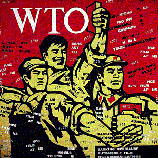German Solar Industry Getting Hammered by Cheap Chinese Imports
 Cheap imports of silicon solar photovoltaic (PV) panels from China, sharp cuts in subsidies, and the ongoing euro zone debt crisis is taking a heavy toll on Germany’s once world-beating solar energy industry.
Cheap imports of silicon solar photovoltaic (PV) panels from China, sharp cuts in subsidies, and the ongoing euro zone debt crisis is taking a heavy toll on Germany’s once world-beating solar energy industry.“The golden era of the German solar energy sector is over,” according to a June 16 Deutsche Welle (DW) article. “At its peak, Germany had a 20-percent share of the global solar energy market, but now the figure stands at just 6 percent. After a rapid decline in recent months, more job cuts are expected to hit the industry.
Oh, the Bitter Irony… of Solar FiTs… Combined with State-Run Economies
Solar PV supply has grown faster even than fast-growing demand. Chinese silicon solar PV manufacturers have been exporting some 95% of the silicon solar panels they produce. They’ve now captured more than 50% of the global market for silicon solar cells and panels.
Ironically, Germany and other European governments’ pioneering solar energy Feed-in Tariffs (FiTs) created the demand and market growth that led the Chinese government to launch a massive solar PV manufacturing subsidy program geared specifically at ramping up exports.
While that’s been the primary driver in bringing about a dramatic drop in the price of solar panels worldwide, it’s also come with substantial downside for domestic manufacturers, essentially putting the foundation of the entire industry value and supply chain in Chinese hands.
Realizing the Ramifications; Better Late than Never?
The cutthroat price competition brought about in large part by China’s manufacturing subsidies has led German and solar PV manufacturers in other countries, including the US, to skimp on R&D, particularly when it comes to investing in improving manufacturing processes.
Driven by government’s industrial policy, the Chinese juggernaut isn’t expected to slow down much, either. In fact, it’s growing. China’s latest Five-Year Plan includes as much as $1.5 trillion in subsidies, along with production and cost reduction targets, for seven strategic emerging industry sectors. Among them is thin-film solar PV, which doesn’t bode well for thin-film manufacturers outside China.
Chinese manufacturers’ rapid rise to market dominance has benefited other solar PV industry segments besides project developers and installers, but the returns have been diminishing. Manufacturers of silicon solar ingots, wafers and cells, and solar PV production equipment — a market in which German manufacturers have figured prominently — have benefited from surging Chinese demand.
The Chinese have been going to school on imports of European and US imports in order to build up their own capabilities. They’ve progressed to the point where Chinese producers of raw, solar-grade silicon, as well as silicon solar wafers and PV cells, have quickly gained market share and are now among the world’s leading producers.
Chinese Imports, FiT Subsidy Cuts, Rising Trade Tensions
Ironically, the flood of cheap Chinese imports, along with the persisting hangover of bad debts accumulated by banks and government during the credit boom that lasted for most of the first decade of the 21st century, has led to significant cuts in German and EU solar FiT subsidy rates.
The pressure on German solar PV industry players has only been increasing, evident in a growing list of insolvency filings. That’s led to increasingly strident assertions that Chinese solar PV companies are dumping product in Germany and other EU markets. SolarWorld AG’s US subsidy has successfully led the Coalition for American Solar Manufacturing’s (CASM) WTO dumping and unfair subsidies cases in the US, where the Commerce Dept. and ITC have issued preliminary penalties on imports of Chinese silicon solar PV cells and panels.
The likelihood of German solar PV companies filing similar petitions is growing. That would escalate trade tensions and the possibility of retaliatory actions at a time when the global economic recovery remains fragile.
Avoiding a Trade War That’s Been Going On for a Decade
Seeking to avoid an all-out trade war, the Coalition for Affordable Solar Energy (CASE), the Global Solar Council (a recently formed industry group of silicon and solar PV production equipment manufacturers), and the US Solar Energy Industry Association (SEIA) have been urging the Commerce Dept., the International Trade Commission (ITC), and the Obama Administration to take a more diplomatic, conciliatory approach to resolving the issue.
Perhaps they haven’t noticed — or cared to notice — but the trade war they seek to avoid has been going on for about a decade now, and China’s stolen a march on everyone else. A level international playing field with enforceable rules needs to be established quickly if any form of open, competitive “free market” for solar PV cells and panels is to survive. Clearly, China’s not going to alter course without external pressure.
This would soak up excess supply, while at the same time boosting GDP and green job creation, not to mention the the tremendous benefit it would yield in terms of reducing CO2 and greenhouse gas emissions and the increasingly costly effects of a warming climate. It wouldn’t generate the international trade surpluses and foreign exchange reserves that China’s primarily relied on in becoming the world’s second-largest economy.
You can return to the main Market News page, or press the Back button on your browser.

